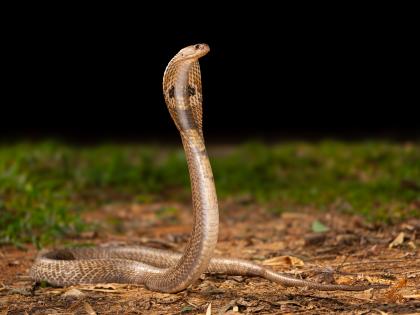IISc Scientists Develop a Single Synthetic Human Antibody Against Highly Toxic Snake Bites
By Anubha Jain | Published: February 25, 2024 06:12 PM2024-02-25T18:12:25+5:302024-02-25T18:14:16+5:30
A synthetic single human antibody has been produced by the scientists of the Evolutionary Venomics Lab (EVL) at the ...

IISc Scientists Develop a Single Synthetic Human Antibody Against Highly Toxic Snake Bites
A synthetic single human antibody has been produced by the scientists of the Evolutionary Venomics Lab (EVL) at the Centre for Ecological Sciences (CES), Indian Institute of Science (IISc), Bengaluru in collaboration with the Scientists at the Scripps Research Institute. The antibody can broadly neutralize a long-chain potent neurotoxin produced by highly toxic snake bites including snakes of the Elapid family like the cobra, krait, and black mamba. The strategy has been used for the first time to develop antibodies for snakebite treatment. The researchers and scientists have adapted the approach used earlier to screen for antibodies against HIV and COVID-19 to produce this new antibody.
A collaborative paper on the development of a human monoclonal antibody for treating neurotoxic snake bites from different regions of the world is featured in the prestigious journal Science Translational Medicine. Kartik Sunagar, Associate Professor, Centre for Ecological Sciences (CES) Indian Institute of Science (IISc) and joint corresponding author of the study published in Science Translational Medicine in an exclusive interview with Lokmat representative Dr. Anubha Jain, said, “We artificially mutate the antibody gene to make it much more efficiently bind to the toxin. Then we test how efficiently it neutralizes. The antibody we have discovered can broadly neutralize a long-chain potent neurotoxin produced by highly toxic snakes or distinct species of elapids like whole venoms of King cobra in the Western Ghats, monocellate cobra in Eastern India, many-banded krait in Southeast Asia and black mamba in Sub-Saharan Africa.”
Sunagar said that the conventional strategy for developing antivenoms involves injecting snake venom into equines like horses, ponies, and mules, and collecting antibodies from their blood. But there are several problems created when injecting these antibodies into humans like serum sickness, reaction to it, etc. Also, these animals get exposed to various bacteria and viruses during their lifetime. As a result, antivenoms also include antibodies against microorganisms, which are therapeutically redundant.
Research has shown that less than 10% of a vial of antivenom contains antibodies that are targeted towards snake venom toxins. IISc informed that the new antibody targets a conserved region in the core of a major toxin called the three-finger toxin (3FTx) in the elapid venom. The scientists tested the ability of new artificial antibodies to bind to 3FTx from various elapid snakes. The researchers conducted extensive screening before zeroing in on an antibody that could bind strongly to various 3FTx. Among the 149 variants of 3FTxs, it could bind to 99. The scientists of IISc said that the antibody’s effectiveness was 15 times that of the conventional artifact. The researchers pre-mixed the antibody with a toxic 3FTx and injected it first into the mice and then into the venom of the monocled cobra from eastern India and the black mamba from sub-Saharan Africa. Within four hours of the toxin given the mice died. Those given the toxin antibody mix survived past the 24-hour observation period and looked healthy. Similar results were achieved against the snakes. It is efficient even when administered 20 minutes post venom injection and requires lesser amounts.
Open in app